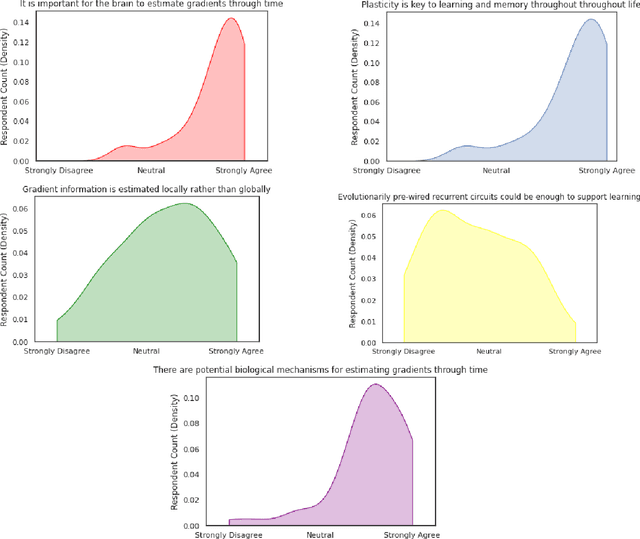Ellen Boven
Cortico-cerebellar networks as decoupling neural interfaces
Oct 28, 2021



Abstract:The brain solves the credit assignment problem remarkably well. For credit to be assigned across neural networks they must, in principle, wait for specific neural computations to finish. How the brain deals with this inherent locking problem has remained unclear. Deep learning methods suffer from similar locking constraints both on the forward and feedback phase. Recently, decoupled neural interfaces (DNIs) were introduced as a solution to the forward and feedback locking problems in deep networks. Here we propose that a specialised brain region, the cerebellum, helps the cerebral cortex solve similar locking problems akin to DNIs. To demonstrate the potential of this framework we introduce a systems-level model in which a recurrent cortical network receives online temporal feedback predictions from a cerebellar module. We test this cortico-cerebellar recurrent neural network (ccRNN) model on a number of sensorimotor (line and digit drawing) and cognitive tasks (pattern recognition and caption generation) that have been shown to be cerebellar-dependent. In all tasks, we observe that ccRNNs facilitates learning while reducing ataxia-like behaviours, consistent with classical experimental observations. Moreover, our model also explains recent behavioural and neuronal observations while making several testable predictions across multiple levels. Overall, our work offers a novel perspective on the cerebellum as a brain-wide decoupling machine for efficient credit assignment and opens a new avenue between deep learning and neuroscience.
CCN GAC Workshop: Issues with learning in biological recurrent neural networks
May 12, 2021
Abstract:This perspective piece came about through the Generative Adversarial Collaboration (GAC) series of workshops organized by the Computational Cognitive Neuroscience (CCN) conference in 2020. We brought together a number of experts from the field of theoretical neuroscience to debate emerging issues in our understanding of how learning is implemented in biological recurrent neural networks. Here, we will give a brief review of the common assumptions about biological learning and the corresponding findings from experimental neuroscience and contrast them with the efficiency of gradient-based learning in recurrent neural networks commonly used in artificial intelligence. We will then outline the key issues discussed in the workshop: synaptic plasticity, neural circuits, theory-experiment divide, and objective functions. Finally, we conclude with recommendations for both theoretical and experimental neuroscientists when designing new studies that could help to bring clarity to these issues.
 Add to Chrome
Add to Chrome Add to Firefox
Add to Firefox Add to Edge
Add to Edge